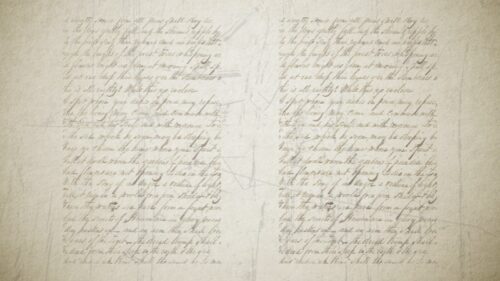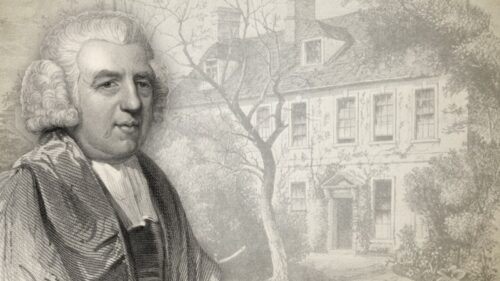-
I Need The Affirmation Of Thy Love, O Lord
Some of the points covered in this sermon: • Providing an overview of the Apostle Paul’s three evangelistic campaigns against the backdrop of a geographical timeline • Tracing the time and location around which the events of Acts 14:20-22 occurred • Highlighting the term “confirmed”, providing a definition for the Greek term and the number of time it appears in the New Testament • Tracing the time and location around which the events of Acts 15:30-35 occurred • Tracing the time and location around which the events of Acts 15:36-41 occurred • Tracing the time and location around which the events of Acts 18:18-23 occurred • Tying together these four texts, by comparing and contrasting the way in which the term “confirmed” is used in each passage…
-
A Kingdom Which Cannot Be Moved
Some of the points covered in this sermon: • Highlighting the seven parts of Hebrews 12:28,29 • Using the framework of sovereign grace, identifying five separate kingdoms and showing which kingdom is referred to in the text • Explaining how this kingdom cannot be moved • Showing who are the recipients of this kingdom • Explaining how the recipients of this kingdom are to have grace • Explaining what it means for the recipients of this kingdom to serve God acceptably with reverence and fear • Explaining how the recipients of this kingdom are blessed by God who is a consuming fire
-
God’s Will For Your Life
Some of the points covered in this sermon: Exploring the will of God for His regenerate people, as it relates to the practicalities of life, according to the threefold view of life depicted by the Apostle Paul in Colossians 3:1-4 I. The Life That Was—“For ye are dead,” (3a) II. The Life That Now Is (1,2,3b) 1. Its Essence—“and your life is hid with Christ in God.” (3b) 2. Its Evidence—“If ye then be risen with Christ,” (1a) (1) Seeking After Christ—“seek those things which are above, where Christ sitteth on the right hand of God.” (1b) (2) Setting Affections On Christ—“Set your affection on things above, not on things on the earth.” (2) III. The Life That Will Be—“When Christ, who is our life,…
-
Death Is No More A Frightful Foe
Some of the points covered in this sermon: • Highlighting the subject and theme of the hymn—Death, an encouragement to the Lord’s people in prospect of their departure from this world • Examining the teachings of Philippians 1:21, upon which the hymn is based—“For to me to live is Christ, and to die is gain.” • Making three observations upon the first clause of the verse—(1) the essence of the believer’s life; (2) the object of the believer’s life; (3) the motivation of the believer’s life • Explaining the last clause of the verse, in light of the foregoing observations • Outlining the six stanzas of the hymn, each of which suggest a reason why the believer should not fear death • Stanza 1: The…
-
Prophetic Inventions
Some of the points covered in this sermon: • Highlighting the two principles of interpretation upon which the entire scheme of dispensational teachings is based • Giving special attention to the second principle of interpretation—all prophecy must be interpreted literally • Showing how Covenantalists and Dispensationalists agree on interpreting history literally • Explaining why Covenantalists believe prophecy should be interpreted figuratively • Explaining why Dispensationalists are wrong to interpret prophecy literally • Pointing out six errors relating to the basic framework of the dispensational view of prophecy • First, they make a wrong dispensational emphasis • Second, they have wrongly identified God’s elect people • Third, they have a wrong view of the Messianic mission • Fourth, they have a wrong gospel message • Fifth,…
-
Praise God, From Whom All Blessings Flow
According to Charles Buck, a doxology is "a hymn used in praise of the Almighty". It is typically sung at the end of corporate worship, before the people of God are dismissed. Some of the points covered in this sermon: • James Montgomery’s appraisal of the hymn • A short sketch of Thomas Ken’s life • The occasion and purpose for which Ken wrote the hymn • The larger compositions into which the hymn originally belonged • The theme of the hymn—those made in the image of God, should praise the God in whose image they are made • An exposition of the hymn—(1) the object of praise; (2) the givers of praise • An examination on how the hymn fits within the framework of…




